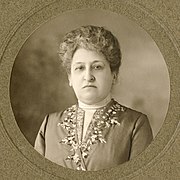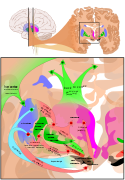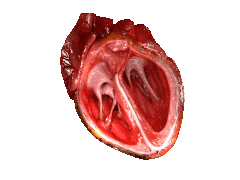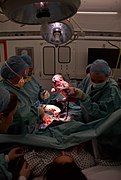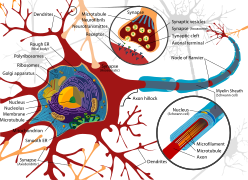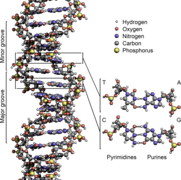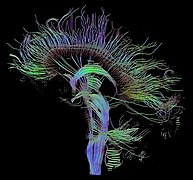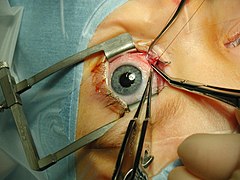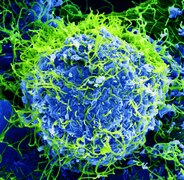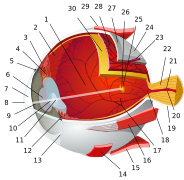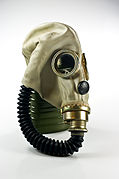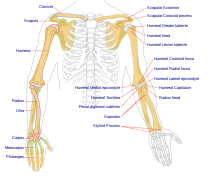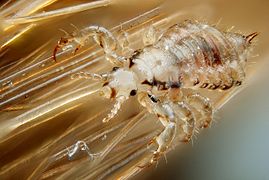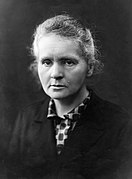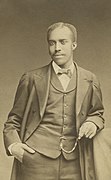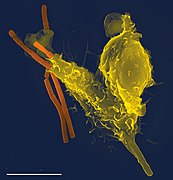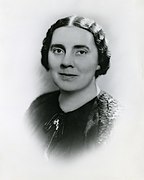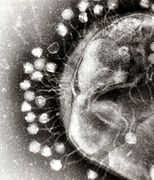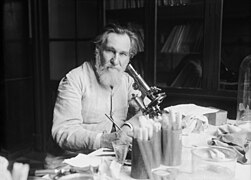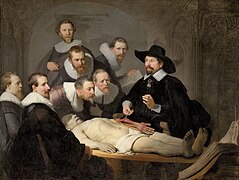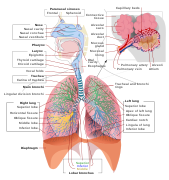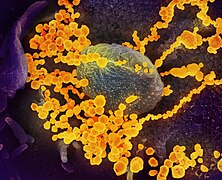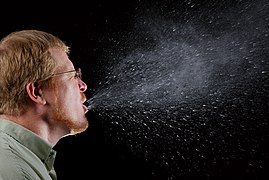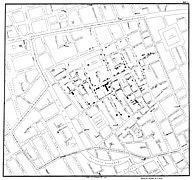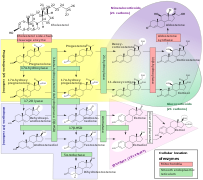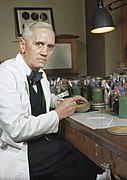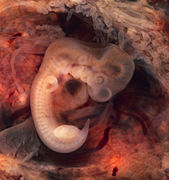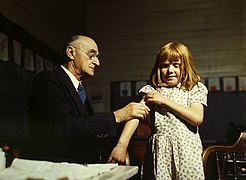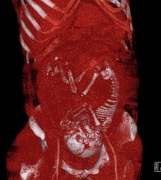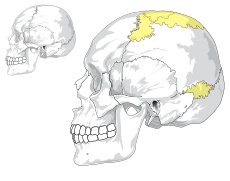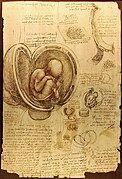Portal:Medicine
- العربية
- Arpetan
- Avañe'ẽ
- Авар
- Azərbaycanca
- বাংলা
- Български
- Bosanski
- Català
- Čeština
- الدارجة
- Deutsch
- Eesti
- Ελληνικά
- Español
- Esperanto
- فارسی
- Français
- Հայերեն
- हिन्दी
- Bahasa Indonesia
- Italiano
- עברית
- ქართული
- Қазақша
- Kiswahili
- Kreyòl ayisyen
- Latviešu
- Magyar
- Македонски
- മലയാളം
- मराठी
- مصرى
- ဘာသာမန်
- Bahasa Melayu
- Nederlands
- 日本語
- Occitan
- پښتو
- Polski
- Português
- Română
- Runa Simi
- Русский
- Shqip
- සිංහල
- Slovenčina
- Soomaaliga
- کوردی
- Српски / srpski
- Suomi
- Svenska
- தமிழ்
- Taclḥit
- Татарча / tatarça
- ไทย
- Türkçe
- Українська
- اردو
- Tiếng Việt
- 中文
- Tolışi
Source: Wikipedia, the free encyclopedia.
(Redirected from
Portal:Health care
)Portal maintenance status: (July 2018)
automated editing software. Learn how to update the maintenance information here . |
Wikipedia portal for content related to Medicine
The Medicine Portal
Santa Maria della Scala
hospital in Siena, Italyionizing radiation, amongst others.
Medicine has been practiced since
cellular and molecular
level in the tissues being stitched arises through science.
Prescientific forms of medicine, now known as traditional medicine or folk medicine, remain commonly used in the absence of scientific medicine and are thus called alternative medicine. Alternative treatments outside of scientific medicine with ethical, safety and efficacy concerns are termed quackery. (Full article...)
 Featured articles - load new batch
Featured articles - load new batch
Featured articles
are displayed here, which represent some of the best content on English Wikipedia.-
Image 1overdose. Bupropion use during pregnancy may be associated with increased odds of congenital heart defects. (Full article...)
-
Image 2eukarya). (Full article...)
-
Image 3clitoral glans (1-b); removal of the inner labia (2-a); and removal of the inner and outer labia and closure of the vulva (type 3). In this last procedure, known as infibulation, a small hole is left for the passage of urine and menstrual fluid; the vagina is opened for intercourse and opened further for childbirth. The practice is rooted in gender inequality, attempts to control women's sexuality, and ideas about purity, modesty, and beauty. It is usually initiated and carried out by women, who see it as a source of honour, and who fear that failing to have their daughters and granddaughters cut will expose the girls to social exclusion. Adverse health effects depend on the type of procedure; they can include recurrent infections, difficulty urinating and passing menstrual flow, chronic pain, the development of cysts, an inability to get pregnant, complications during childbirth, and fatal bleeding. There are no known health benefits. (Full article...)Image 4antibodies to the virus. (Full article...)Image 5Paul Nobuo Tatsuguchi (辰口 信夫, Tatsuguchi Nobuo), sometimes mistakenly referred to as Nebu Tatsuguchi (August 31, 1911 – May 30, 1943), was a Japanese soldier and surgeon who served in the Imperial Japanese Army (IJA) during World War II. He was killed during the Battle of Attu on Attu Island, Alaska, United States, on May 30, 1943.
A devout Seventh-day Adventist, Tatsuguchi studied medicine and was licensed as a physician in the United States (US). He returned to his native Japan to practice medicine at the Tokyo Adventist Sanitarium, where he received further medical training. In 1941, he was ordered to cease his medical practice and conscripted into the IJA as an acting medical officer, although he was given an enlisted rather than officer rank because of his American connections. In late 1942, Tatsuguchi was sent to Attu, which had been occupied by Japanese forces in June 1942. On May 11, 1943, The United States Army landed on the island, intending to retake American soil from the Japanese. (Full article...)Image 6blood disorders like leukemia. Not all results falling outside of the reference range require medical intervention. (Full article...)Image 7DNA by polymerase chain reaction. Chronic disease is diagnosed by finding antibodies for T. cruzi in the blood. (Full article...)Image 8Anzac Mounted Division in 1916, which he combined with the post of ADMS AIF Egypt. In 1917, he became Deputy Director of Medical Services (DDMS) of the Desert Mounted Corps. After the war, he wrote articles on medical aspects of the Sinai and Palestine campaign, and the section on the campaign for the Official History of Australia in the War of 1914–1918. (Full article...)Image 9CT scan of the head if done within six hours of symptom onset. Occasionally, a lumbar puncture is also required. After confirmation further tests are usually performed to determine the underlying cause. (Full article...)Image 10structural adjustment loans, with conditions of limited public spending on health and education infrastructure, to the uncontrolled spread of AIDS and subsequent food shortages as the disease infected much of the working-age population. Lewis also addresses such issues as discrimination against women and primary education for children. To help alleviate problems, he ends with potential solutions which mainly require increased funding by G8 countries to levels beyond what they promise. (Full article...)Image 11anaemia. (Full article...)Image 12ability to invade other parts of the body. A number of types of pancreatic cancer are known.)
The most common, pancreatic adenocarcinoma, accounts for about 90% of cases, and the term "pancreatic cancer" is sometimes used to refer only to that type. These adenocarcinomas start within the part of the pancreas that makes digestive enzymes. Several other types of cancer, which collectively represent the majority of the non-adenocarcinomas, can also arise from these cells. (Full article...Image 13
Ryan Wayne White (December 6, 1971 – April 8, 1990) was an American teenager from Kokomo, Indiana, who became a national poster child for HIV/AIDS in the United States after his school barred him from attending classes following a diagnosis of AIDS.
As a haemophiliac, he became infected with HIV from a contaminated factor VIII blood treatment and, when diagnosed in December 1984, was given six months to live. Doctors said he posed no risk to other students, as AIDS is not an airborne disease and spreads solely through bodily fluids, but AIDS was poorly understood by the general public at the time. When White tried to return to school, many parents and teachers in Howard County rallied against his attendance due to unwarranted concerns of the disease spreading to other students and staff. A lengthy administrative appeal process ensued, and news of the conflict turned White into a popular celebrity and advocate for AIDS research and public education. Surprising his doctors, White lived five years longer than predicted. He died on April 8, 1990, one month before his high school graduation. (Full article...)Image 14death-positive advocate Megan Rosenbloom. Dealing with anthropodermic bibliopegy, the binding of books in human skin, it expounds upon Rosenbloom's research on such books and their historical, ethical, and cultural implications.)
The book focuses on the relationship between anthropodermic bibliopegy and the history of medicine; most confirmed cases of such books were created or owned by medical professionals, in contrast to common stereotypes that they were associated with Nazi Germany, serial killers, or the French Revolution. Rosenbloom discusses how the practice reflects the changing attitudes towards consent, ownership, and disposal of human bodies, and how the history of anthropodermic books intertwines with the history of medical ethics as a field. She interviews librarians, archivists, collectors, and experts on the topic, and examines notable examples of such books and their origins. Though Rosenbloom supports the preservation and maintenance of anthropodermic books, Dark Archives also covers arguments to the contrary, such as those espoused by Princeton University Library senior librarian Paul Needham. (Full article...Image 15thyroxine (thyroid hormone) levels, usually with an additional precipitant. (Full article...)Selected image – show another
WikiProject

Get involved by joining WikiProject Medicine. We discuss collaborations and all manner of issues on our talk page.
Related portals
 Good articles - load new batchThese areGood articles, which meet a core set of high editorial standards.
Good articles - load new batchThese areGood articles, which meet a core set of high editorial standards.
-
Image 1iron supplements and sometimes blood transfusions. HHT is transmitted in an autosomal dominant fashion, and occurs in one in 5,000–8,000 people in North America. (Full article...)Image 2

Centers for Disease Control and Prevention (CDC) recommendations for the amount of sleep needed decrease with age. While sleep quantity is important, good sleep quality is also essential to avoid sleep disorders.
Sleep hygiene is a behavioral and environmental practice developed in the late 1970s as a method to help people with mild to moderate insomnia. Clinicians assess the sleep hygiene of people with insomnia and other conditions, such as depression, and offer recommendations based on the assessment. Sleep hygiene recommendations include: establishing a regular sleep schedule; using naps with care; not exercising physically or mentally too close to bedtime; limiting worry; limiting exposure to light in the hours before sleep; getting out of bed if sleep does not come; not using bed for anything but sleep and sex; avoiding alcohol as well as nicotine, caffeine, and other stimulants in the hours before bedtime; and having a peaceful, comfortable and dark sleep environment. However, , the empirical evidence for the effectiveness of sleep hygiene is "limited and inconclusive" for the general population and for the treatment of insomnia, despite being the oldest treatment for insomnia. A systematic review by the AASM concluded that clinicians should not prescribe sleep hygiene for insomnia due to the evidence of absence of its efficacy and potential delaying of adequate treatment, recommending instead that effective therapies such as CBT-i should be preferred. (Full article...)Image 3health statistician whose work contributed to the creation of Medicare in the United States. Rice graduated from the University of Wisconsin–Madison and began working with the US government soon after, but left the workforce to begin raising a child. Just over a decade later, she returned to government work with a position at the Social Security Administration, where she was one of the first scientists to study the economic cost of illness and exposed a lack of health insurance among the elderly.)
Rice was later the director of the National Center for Health Statistics from 1976 to 1982, where she helped create the National Death Index. She finished her career at the University of California, San Francisco, where she was a Regents' lecturer and professor emeritus. During her time at the university, she co-authored a paper on the costs of smoking, which impacted ongoing legal negotiations between the US government and the US tobacco industry and contributed to the Tobacco Master Settlement Agreement. (Full article...Image 4behavioral genetics, and created the first academic program on behavioral genetics in the United States. He won awards such as the Hofheimer Prize for Research, the highest award from the American Psychiatric Association for psychiatric research. Lastly, Gottesman was a professor in the psychology department at the University of Minnesota, where he received his Ph.D.)
A native of Ohio, Gottesman studied psychology for his undergraduate and graduate degrees, became a faculty member at various universities, and spent most of his career at the University of Virginia and the University of Minnesota. He is known for researching schizophrenia in identical twins to document the contributions of genetics and the family, social, cultural, and economic environment to the onset, progress, and inter-generational transmission of the disorder. Gottesman has worked with researchers to analyze hospital records and conduct follow-up interviews of twins where one or both were schizophrenic. He has also researched the effects of genetics and the environment on human violence and variations in human intelligence. Gottesman and co-researcher James Shields introduced the word epigenetics—the control of genes by biochemical signals modified by the environment from other parts of the genome—to the field of psychiatric genetics. (Full article...Image 5The Xinxiu bencao (Chinese: 新修本草; pinyin: Xīnxiū běncǎo), also known as the Tang bencao (Chinese: 唐本草; pinyin: Táng běncǎo), is a Chinese pharmacopoeia written in the Tang dynasty by a team of officials and physicians headed by editor-in-chief Su Jing [zh]. It borrowed heavily from—and expanded upon—an earlier monograph by Tao Hongjing. The text was first published in 659; although it is now considered lost in China, at least one copy exists in Japan, where the text had been transmitted to in 721. (Full article...)Image 6β-alanine. Its name comes from the Greek πάντοθεν pantothen, meaning "from everywhere", because pantothenic acid, at least in small amounts, is in almost all foods. Deficiency of pantothenic acid is very rare in humans. In dietary supplements and animal feed, the form commonly used is calcium pantothenate, because chemically it is more stable, and hence makes for longer product shelf-life, than sodium pantothenate and free pantothenic acid. (Full article...)Image 7Theanti-abortion agenda.)
In early pregnancy, hormone levels increase, leading to breast growth. The hypothesis proposes that if this process is altered by an abortion, then more immature cells could be left behind, and that these immature cells could increase the risk of breast cancer over time. (Full article...Image 8acquired immunodeficiency syndrome (AIDS), a condition in which progressive failure of the immune system allows life-threatening opportunistic infections and cancers to thrive. Without treatment, the average survival time after infection with HIV is estimated to be 9 to 11 years, depending on the HIV subtype.)
In most cases, HIV is a sexually transmitted infection and occurs by contact with or transfer of blood, pre-ejaculate, semen, and vaginal fluids. Non-sexual transmission can occur from an infected mother to her infant during pregnancy, during childbirth by exposure to her blood or vaginal fluid, and through breast milk. Within these bodily fluids, HIV is present as both free virus particles and virus within infected immune cells.
Research has shown (for both same-sex and opposite-sex couples) that HIV is untransmittable through condomless sexual intercourse if the HIV-positive partner has a consistently undetectable viral load. (Full article...Image 9radiation poisoning.)
Charcot's techniques were controversial; commentators have disagreed as to whether Wittman suffered from a physical condition like epileptic seizures, suffered from mass hysteria resulting from conditions at La Salpêtrière, or was merely feigning symptoms. She is depicted in A Clinical Lesson at the Salpêtrière (1887) and was the subject of a 2004 Per Olov Enquist novel. (Full article...Image 10autoimmune disorder in which the body's immune system mistakenly attacks the peripheral nerves and damages their myelin insulation. Sometimes this immune dysfunction is triggered by an infection or, less commonly, by surgery, and rarely, by vaccination. The diagnosis is usually based on the signs and symptoms through the exclusion of alternative causes and supported by tests such as nerve conduction studies and examination of the cerebrospinal fluid. There are a number of subtypes based on the areas of weakness, results of nerve conduction studies, and the presence of certain antibodies. It is classified as an acute polyneuropathy. (Full article...)Image 11co-trimoxazole. In countries with the advanced healthcare system, approximately 10% of people with melioidosis die from the disease. In less developed countries, the death rate could reach 40%. (Full article...)Image 12graft rejection by Peter Medawar in the 1950s, and the way the body distinguishes self from not-self via natural killer cells. The compatibility mechanism contributes also to the success of pregnancy by helping the placenta to form, and may play a role in mate selection. (Full article...)Image 13single-stranded positive-sense RNA (+ssRNA) genome that is about 7500 nucleotides long. The viral particle is about 30 nm in diameter with icosahedral symmetry. Because of its short genome and its simple composition—only RNA and a nonenveloped icosahedral protein coat that encapsulates it—poliovirus is widely regarded as the simplest significant virus. (Full article...)Image 14common ancestor ; or "community of descent," as Darwin expressed it. (Full article...)Image 15Body image disturbance (BID) is a common symptom in patients with eating disorders and is characterized by an altered perception of one's own body.
The onset is mainly attributed to patients with anorexia nervosa who persistently tend to subjectively discern themselves as average or overweight despite adequate, clinical grounds for a classification of being considerably or severely underweight. The symptom is an altered perception of one's body and a severe state of bodily dissatisfaction characterizing the body image disturbance. It is included among the diagnostic criteria for anorexia nervosa in DSM-5 (criterion C). (Full article...)Did you know – show different entries
- ...anyone who falsely claims to be a 5000?
- ...arrhythmias.
Did you know archiveGeneral images – load new batch
The following are images from various Medicine-related articles on Wikipedia.-
Image 1healthcare expenditure in Japan by age group (from Health insurance)
-
Image 2Magical stela or cippus of Horus inscribed with healing encantations (c. 332 to 280 BCE). (from History of medicine)
-
Image 318th-century medical remedies collected by a British Gentry family (from History of medicine)
-
Image 4AMA Code of Medical Ethics (from Medical ethics)
-
Image 6Mexico City epidemic of 1737, with elites calling on theVirgin of Guadalupe (from History of medicine)
-
Image 7Eastern Han dynasty. (from History of medicine)
-
Image 9Smallpox vaccination in Niger, 1969. A decade later, this was the first infectious disease to be eradicated. (from History of medicine)
-
Image 10Sketch of Muslim physicianMuhammad ibn Zakariya al-Razi (from History of medicine)
-
Image 11Jackson Memorial Hospital in Miami, the primary teaching hospital of the University of Miami's Leonard M. Miller School of Medicine and the largest hospital in the United States with 1,547 beds (from Health care)
-
Image 14A cuneiform terracotta tablet describing a medicinal recipe for poisoning (c. 18th century BCE). Discovered in Nippur, Iraq.
-
Image 15Life Expectancy of the total population at birth among several OECD member nations. Data source: OECD's iLibrary (from Health insurance)
-
Image 16Health Expenditure per capita (in PPP-adjusted US$) among several OECD member nations. Data source: OECD's iLibrary (from Health insurance)
-
Image 17Charite in Berlin (from History of medicine)
-
Image 18A 12th-century manuscript of the Hippocratic Oath in Greek, one of the most famous aspects of classical medicine that carried into later eras (from History of medicine)
-
Image 19A 12th-centuryByzantine manuscript of the Hippocratic Oath (from Medical ethics)
-
Image 20Statue of Robert Koch, father of medical bacteriology, at Robert-Koch-Platz (Robert Koch square) in Berlin (from History of medicine)
-
Image 21Medicine during the First World War - Medical Transport. (from History of medicine)
-
Image 22The plinthios brochos as described by Greek physicianjaw. These writings were preserved in one of Oribasius' collections. (from History of medicine)
-
Image 23lucky bamboo, and other items. (from Traditional medicine)
-
Image 25A Neo-Assyrian cuneiform tablet fragment describing medical text (c. 9th to 7th century BCE). (from History of medicine)
-
Image 26TheEdwin Smith Surgical Papyrus, written in the 17th century BCE, contains the earliest recorded reference to the brain. New York Academy of Medicine. (from History of medicine)
-
Image 27Depiction of smallpox in Franciscan Bernardino de Sahagún's history of the conquest of Mexico, Book XII of the Florentine Codex, from the defeated Aztecs' point of view (from History of medicine)
-
Image 29A doctor checks a patient's pulse in Meiji-era Japan. (from History of medicine)
-
Image 30A Ukrainian monument to the HIV pandemic. (from History of medicine)
-
Image 31The numbers of Americans lacking health insurance and the uninsured rate from 1987 to 2008 (from Health insurance)
-
Image 32Ahuman nervous system. (from History of medicine)
-
Image 33Seven named physicians and botanists of the Classical world from )
-
Image 34Emil Kraepelin (1856–1926), the founder of modern scientific psychiatry, psychopharmacology and psychiatric genetics. (from History of medicine)
-
Image 35Total healthcare cost per person. Public and private spending. US dollars PPP. For example: $6,319 for Canada in 2022. $12,555 for the US in 2022. (from Health care)
-
Image 36Sometimes traditional medicines include parts of endangered species, such as the slow loris in Southeast Asia. (from Traditional medicine)
-
Image 37Primary care may be provided in community health centers. (from Health care)
-
Image 38Patient,Surrey County Lunatic Asylum, c. 1850–58. The asylum population in England and Wales rose from 1,027 in 1827 to 74,004 in 1900. (from History of medicine)
-
Image 40Mandrake (written 'ΜΑΝΔΡΑΓΟΡΑ' in Greek capitals). Naples Dioscurides, 7th century (from History of medicine)
-
Image 41Medical personnel place sterilized covers on the arms of the daVinci Xi surgical system, a minimally-invasive robotic surgery system, at the William Beaumont Army Medical Center. (from History of medicine)
-
Image 42Taoist symbol of Yin and Yang (from Medical ethics)
-
Image 43"More Doctors Smoke Camels than Any Other Cigarette"advertisement for Camel cigarettes in the 1940s (from Medical ethics)
-
Image 45Most countries have seen a tremendous increase in life expectancy since 1945. However, in southern Africa, the HIV epidemic beginning around 1990 has eroded national health. (from History of medicine)
-
Image 46COVID-19 swab testing in Rwanda (2021). (from History of medicine)
-
Image 47The Quaker-run York Retreat, founded in 1796, gained international prominence as a centre for moral treatment and a model of asylum reform following the publication of Samuel Tuke's Description of the Retreat (1813). (from History of medicine)
-
Image 48National Hospital for Neurology and Neurosurgery in London, United Kingdom is a specialist neurological hospital. (from Health care)
-
Image 49Global concentrations of health care resources, as depicted by the number of physicians per 10,000 individuals, by country. Data is sourced from a World Health Statistics 2010, a WHO report.[needs update] (from Health care)
-
Image 50Infographic showing how healthcare data flows within the billing process (from Medical billing)
-
Image 51Yarrow, a medicinal plant found in human-occupied caves in the Upper Palaeolithic period. (from History of medicine)
-
Image 52Ethical prayer for medical wisdom by Dr Edmond Fernandes (from Medical ethics)
-
Image 53Portrait of Susruta, the author of the he Suśrutasamhitā which describes procedures on various forms of surgery, including rhinoplasty, (from History of medicine)
-
Image 54"Diagram of the causes of mortality in the army in the East" by Florence Nightingale. (from History of medicine)
-
Image 55Health spending by country. Percent of GDP (Gross domestic product). For example: 11.2% for Canada in 2022. 16.6% for the United States in 2022. (from Health care)
-
Image 56Life expectancy vs healthcare spending of rich OECD countries. US average of $10,447 in 2018. (from Health care)
-
Image 57Theemergency room is often a frontline venue for the delivery of primary medical care. (from Health care)
-
Image 58Curandera performing a limpieza in Cuenca, Ecuador (from Traditional medicine)
More Did you know (auto generated)

- ... that Indian gynaecologist and reproductive medicine pioneer Baidyanath Chakrabarty, who performed over 4,000 IVF procedures, was a cricket fan who thought Virat Kohli and Ashwin were "such good boys"?
- ... that the Anglo-Saxons may have used a mixture of garlic, another Allium, wine, and bovine bile as an eye medicine?
- ... that Ala Stanford established the Black Doctors COVID-19 Consortium to fight racism in medicine, vaccinating nearly 4,000 people?
- ... that according to Human Rights Watch, U.S. maximum pressure against Iran has seriously threatened Iranians' right to health and access to essential medicines including those of cancer patients?
- ... that a lack of screening for pregnant women with syphilis in sub-Saharan Africa is associated with increased infant mortality?
- ... that the spotted lanternfly has been used in traditional Chinese medicine to treat swelling since the 1100s?
Topics
Categories
Recognized content
Extended content
This is a list of recognized content, updated weekly by WP:RECOGfor configuration options.Featured articles
- Amphetamine
- Anti-tobacco movement in Nazi Germany
- Bacteria
- Golding Bird
- Bupropion
- Buruli ulcer
- Chagas disease
- Cholangiocarcinoma
- Coeliac disease
- Complete blood count
- Dark Archives
- Dementia with Lewy bodies
- Dengue fever
- Diffuse panbronchiolitis
- Rupert Downes
- Endometrial cancer
- Everywhere at the End of Time
- Neil Hamilton Fairley
- Ray Farquharson
- Female genital mutilation
- Howard Florey
- Genetics
- Debora Green
- Helicobacter pylori
- Helium
- Hepatorenal syndrome
- Oliver Wendell Holmes Sr.
- Β-Hydroxy β-methylbutyric acid
- Influenza
- Ketogenic diet
- Leech
- Linezolid
- Lung cancer
- Major depressive disorder
- Frances Gertrude McGill
- Meningitis
- Menstrual cycle
- 1966 New York City smog
- Osteochondritis dissecans
- Oxygen toxicity
- Pancreatic cancer
- Polio
- Pulmonary contusion
- Race Against Time (Lewis book)
- 1984 Rajneeshee bioterror attack
- Rhabdomyolysis
- Rotavirus
- William S. Sadler
- Schizophrenia
- Serpin
- Social history of viruses
- Subarachnoid hemorrhage
- Taare Zameen Par
- Paul Nobuo Tatsuguchi
- Thyrotoxic periodic paralysis
- Tourette syndrome
- Virus
- Introduction to viruses
- Water fluoridation
- Ryan White
Good articles
- 17q12 microdeletion syndrome
- 21-Hydroxylase
- 2007 Bernard Matthews H5N1 outbreak
- 2009 swine flu pandemic
- ALS
- Odette Abadi
- Abortion–breast cancer hypothesis
- Acne
- Adderall
- Agent Orange
- David Albala
- Alcohol and Native Americans
- Alcoholism
- Beulah Ream Allen
- Alprazolam
- Mary Amdur
- Frances Ames
- Anaphylaxis
- Anatomy
- Andersen–Tawil syndrome
- Androgen backdoor pathway
- Animal testing
- Antibiotic sensitivity testing
- Aphthous stomatitis
- Trinidad Arroyo
- Ascending cholangitis
- Aspirin
- Asthma
- Attention deficit hyperactivity disorder
- BGR-34
- Anna Bågenholm
- Bahrain health worker trials
- Basic Medicine
- Beck Depression Inventory
- Beck–Fahrner syndrome
- Behavioural genetics
- Benzodiazepine
- Biotin
- Birt–Hogg–Dubé syndrome
- Birth control
- Ann Bishop (biologist)
- Bisphenol A
- Blood culture
- Body image disturbance
- Boston Society for Medical Improvement
- Inès de Bourgoing
- Brachytherapy
- Briarcliff Manor Fire Department
- John R. Brinkley
- Brugada syndrome
- Bugchasing
- Burn
- Sylvia Mathews Burwell
- William Heath Byford
- CDK13-related disorder
- COVID-19 pandemic
- Cadet Nurse Corps
- Calcium
- Eugene W. Caldwell
- Cancer pain
- Martha Hughes Cannon
- Captain Novolin
- Carbon monoxide poisoning
- Nessa Carey
- Elizabeth Casson
- Cataract surgery
- Catecholaminergic polymorphic ventricular tachycardia
- Cedillo v. Secretary of Health and Human Services
- Cerebral venous sinus thrombosis
- Chronic obstructive pulmonary disease
- Chylothorax
- Clindamycin
- Coalition for Epidemic Preparedness Innovations
- Coffin birth
- Collaborative practice agreement
- Lucinda L. Combs
- Common cold
- The Compatibility Gene
- CT scan
- Concussion
- Consciousness
- Aniru Conteh
- Coronary artery bypass surgery
- Corrupted Blood incident
- Henri Coutard
- Crohn's disease
- Croup
- Rebecca Lee Crumpler
- Marie Curie
- Daniel Sickles's leg
- De materia medica
- Joseph DeLee
- Decompression sickness
- Deep vein thrombosis
- Dental implant
- Type 2 diabetes
- Diabetic ketoacidosis
- Diaphragmatic rupture
- Disease X
- Dopamine
- Down syndrome
- Doxorubicin
- Dracunculiasis
- Dyslexia
- Effects of climate change
- Egg allergy
- Electric bath (electrotherapy)
- Endell Street Military Hospital
- Epidural administration
- Epilepsy
- Ethylene glycol poisoning
- Familial hypercholesterolemia
- María Teresa Ferrari
- Fibrothorax
- Gerald Fischbach
- Fish allergy
- Flea
- Folate
- Sir Ewan Forbes, 11th Baronet
- Edward Ford (physician)
- Friedreich's ataxia
- Gastroenteritis
- Atul Gawande
- Vera Gedroits
- Genes, Brain and Behavior
- Genome-wide association study
- Mary Gordon (prison inspector)
- Irving Gottesman
- Gout
- Great Plague of London
- Guillain–Barré syndrome
- HIV/AIDS in Malawi
- Hanhart syndrome
- Hedonic hunger
- Hemorrhoid
- Hemothorax
- Henoch–Schönlein purpura
- Heparin-induced thrombocytopenia
- Hepatic encephalopathy
- Hepatitis B
- Hepatitis C
- Hepatitis E
- George Foster Herben
- Hereditary coproporphyria
- Hereditary hemorrhagic telangiectasia
- Hermaphrodite (Nadar)
- Herpes
- Mary Herring
- Thomas Hinde
- Histamine N-methyltransferase
- History of malaria
- History of poison
- History of aspirin
- HIV/AIDS
- HIV
- Hospice care in the United States
- Heart
- Hypericum perforatum
- Hypertension
- Hypopituitarism
- Hypothyroidism
- Idiopathic intracranial hypertension
- Impacted wisdom teeth
- Imprinted brain hypothesis
- Injector pen
- International emergency medicine
- Interventricular foramina (neuroanatomy)
- Intramuscular injection
- Intravenous therapy
- Iodine
- 1971 Iraq poison grain disaster
- Aletta Jacobs
- Sophie Jamal
- Evan O'Neill Kane
- Mihran Kassabian
- Frances Oldham Kelsey
- Kew Asylum
- Kidney stone disease
- Constance Kies
- Kivu Ebola epidemic
- Kusumoto Ine
- Henrietta Lacks
- Lafargue Clinic
- Lambert–Eaton myasthenic syndrome
- Late onset congenital adrenal hyperplasia
- Linda Laubenstein
- Lead poisoning
- Johannes Leimena
- Charles Lester Leonard
- Leptospirosis
- Klas August Linderfelt
- Long COVID
- Roderigo Lopes
- Low back pain
- Lujan–Fryns syndrome
- Clarence Lushbaugh
- Magnetic resonance imaging
- Malaria
- Malpuech facial clefting syndrome
- Mayo Foundation for Medical Education & Research v. United States
- Helen Mayo
- Frances McConnell-Mills
- Enriqueta Medellín
- Medicinal plants
- Melioidosis
- Joseph Merrick
- Metabolic dysfunction–associated steatotic liver disease
- Metal corset
- Metformin
- Meth mouth
- Methamphetamine
- Methoxyflurane
- Abe Mickal
- Microorganism
- Midazolam
- Migraine
- Milk allergy
- Molecular diagnostics
- Rosalie Slaughter Morton
- Mu wave
- John Benjamin Murphy
- Myalgic encephalomyelitis/chronic fatigue syndrome
- Myocardial infarction
- Nasodigitoacoustic syndrome
- National Public Health Laboratory (Sudan)
- Victor Negus
- Catherine Neill
- Neuroacanthocytosis
- Neuroblastoma
- New York Rescue Workers Detoxification Project
- Niacin
- Nitrogen narcosis
- Nomenclature of monoclonal antibodies
- Noonan syndrome with multiple lentigines
- Norepinephrine
- Obesity
- Obesity hypoventilation syndrome
- Osteitis fibrosa cystica
- Osteogenesis imperfecta
- Ovulatory shift hypothesis
- Pantothenic acid
- Paracetamol poisoning
- Parasitism
- Rand Paul
- Pelvic inflammatory disease
- Charles Bingham Penrose
- Pentasomy X
- Persecutory delusion
- Pituitary apoplexy
- Planned Parenthood
- Plantar fasciitis
- Plasmodium knowlesi
- Playa de Oro virus
- Pneumonia
- Pneumothorax
- Polio vaccine
- Poliovirus
- Political abuse of psychiatry in the Soviet Union
- Post-traumatic epilepsy
- Potassium
- Willis J. Potts
- Premastication
- Prepatellar bursitis
- Prion
- Prostate cancer
- Protein C
- Psoriasis
- Psychedelic music
- Pulvermacher's chain
- Rabeprazole
- Gabor B. Racz
- Railway surgery
- Melvin Ramsay
- Rapid strep test
- Marie Rennotte
- Cornelius P. Rhoads
- Riboflavin
- Dorothy P. Rice
- Al-Risalah al-Dhahabiah
- Jennie Smillie Robertson
- John Rolph
- Royal Commission on Animal Magnetism
- Rumination syndrome
- Monique Ryan
- Terri Schiavo case
- Selective androgen receptor modulator
- Self-harm
- SENSOR-Pesticides
- Serotonin syndrome
- Sesame allergy
- Shellfish allergy
- Shingles
- Short QT syndrome
- Sleep hygiene
- Slipping rib syndrome
- Smallpox
- Horace Smithy
- Solar urticaria
- Elmer Ernest Southard
- Spanish flu
- Spinal cord injury
- Spinocerebellar ataxia type 1
- Barend Joseph Stokvis
- Streptococcal pharyngitis
- Tina Strobos
- John Struthers (anatomist)
- Subcutaneous emphysema
- Suicide
- Alma Sundquist
- Syphilis
- Jean Tatlock
- 2,3,7,8-Tetrachlorodibenzodioxin
- Tetrasomy X
- Thiamine
- Thiomersal and vaccines
- Thought broadcasting
- Thrombophilia
- Thung Sin Nio
- Tick
- Tietze syndrome
- Tobacco smoke enema
- Toothache
- Tracheal intubation
- Tracheobronchial injury
- Trauma-sensitive yoga
- Traumatic brain injury
- Trisomy X
- Tuberculosis
- William Tuke
- Ultrasonography of chronic venous insufficiency of the legs
- Urinary tract infection
- Urinothorax
- Venom
- Vertebral artery dissection
- Veterans benefits for post-traumatic stress disorder in the United States
- Vitamin A
- Vitamin B6
- Vitamin B12
- Vitamin C
- Vitamin K
- Vitamin
- Warfarin
- Stafford L. Warren
- Tobias Watkins
- Charles DeWitt Watts
- Western African Ebola virus epidemic
- Western University of Health Sciences
- Wet market
- Robert White (Virginia physician)
- White blood cell differential
- John Wieting
- Wikipedia and the COVID-19 pandemic
- Erik Adolf von Willebrand
- Wilson's disease
- Albertine Winner
- Marie Wittman
- Women's health
- Women's health in India
- XXXYY syndrome
- XYYY syndrome
- Xinxiu bencao
- Zyklon B
Featured pictures
-
"Capt. Della H. Raney, Army Nurse Corps, who now heads the nursing staff at the station hospital at Camp Beale, CA - NARA - 535942
-
Agarplate redbloodcells edit
-
Albert Edelfelt - Louis Pasteur - 1885
-
Aletta Jacobs, 1895-1905
-
AntigenicShift HiRes
-
Autorecessive
-
Basal ganglia circuits
-
Beulah Ream Allen receiving the Medal of Freedom (1945)
-
Blood values sorted by mass and molar concentration
-
C. Everett Koop, 1980s
-
CG Heart
-
CH.SZ.Stoos Fronalpstock Sequence Rescue-Helicopter REGA 16K 16x9-R
-
Cesarian the moment of birth3
-
Child with Smallpox Bangladesh
-
Circulatory System en
-
Complete neuron cell diagram en
-
Computed tomography of human brain - large
-
DNA Structure+Key+Labelled.pn NoBB
-
DTI-sagittal-fibers
-
Da Vinci Vitruve Luc Viatour
-
David Livingstone by Thomas Annan
-
Denis Mukwege par Claude Truong-Ngoc novembre 2014
-
Desinsertion du muscle CO
-
Ebola Virus - Electron Micrograph
-
Eye Central Heterochromia crop and lighter
-
Eye-diagram no circles border
-
Gas mask MUA IMGP0157
-
Human arm bones diagram
-
Human karyotype with bands and sub-bands
-
June odd-eyed-cat cropped
-
MRNA vaccines against the coronavirus
-
Male human head louse
-
Mantoux tuberculin skin test
-
Marie Curie c. 1920s
-
Nadar - "Hermaphrodite" (Seventh Gallica image)
-
Nathan Francis Mossell (1856-1946), M.D. 1882, portrait photograph by H.D. Carns & Co; Image ID 27593990
-
Neutrophil with anthrax copy
-
Novel Coronavirus SARS-CoV-2
-
Osmotic pressure on blood cells diagram
-
PET-MIPS-anim
-
Pauline Gracia Beery Mack (1891-1974) (5493947511) - Restoration
-
Petasites hybridus inflorescence - Keila
-
Phage
-
Polydactyly 01 Lhand AP
-
Professeur Metchnikoff, portrait du scientifique dans un laboratoire de recherche
-
Rembrandt - The Anatomy Lesson of Dr Nicolaes Tulp
-
Respiratory system complete en
-
Root Canal Illustration Molar
-
SARS-CoV-2 scanning electron microscope image
-
Sneeze
-
Snow-cholera-map-1
-
Steroidogenesis
-
Synthetic Production of Penicillin TR1468
-
Tubal Pregnancy with embryo
-
Typhoid inoculation2
-
User-FastFission-brain
-
Volume rendered CT scan of a pregnancy of 37 weeks of gestational age (smaller)
-
Wormian bones
-
Yawning Infant, August 2018
Former featured pictures
-
Da Vinci Studies of Embryos Luc Viatour
-
Human skeleton back en
-
Human skeleton front en
Associated Wikimedia
The following Wikimedia Foundation sister projects provide more on this subject:
-
Commons
Free media repository -
Wikibooks
Free textbooks and manuals -
Wikidata
Free knowledge base -
Wikinews
Free-content news -
Wikiquote
Collection of quotations -
Wikisource
Free-content library -
Wikiversity
Free learning tools -
Wiktionary
Dictionary and thesaurus
Discover Wikipedia using portals




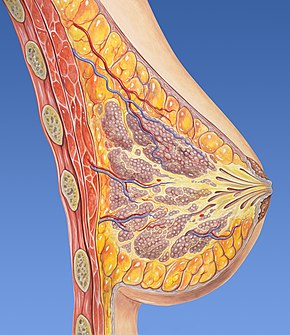



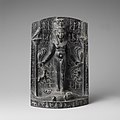







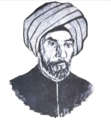













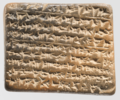


















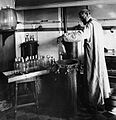




![Image 49Global concentrations of health care resources, as depicted by the number of physicians per 10,000 individuals, by country. Data is sourced from a World Health Statistics 2010, a WHO report.[needs update] (from Health care)](http://upload.wikimedia.org/wikipedia/commons/thumb/1/1f/Global_physician_density_map_-_WHO_2010.png/120px-Global_physician_density_map_-_WHO_2010.png)















